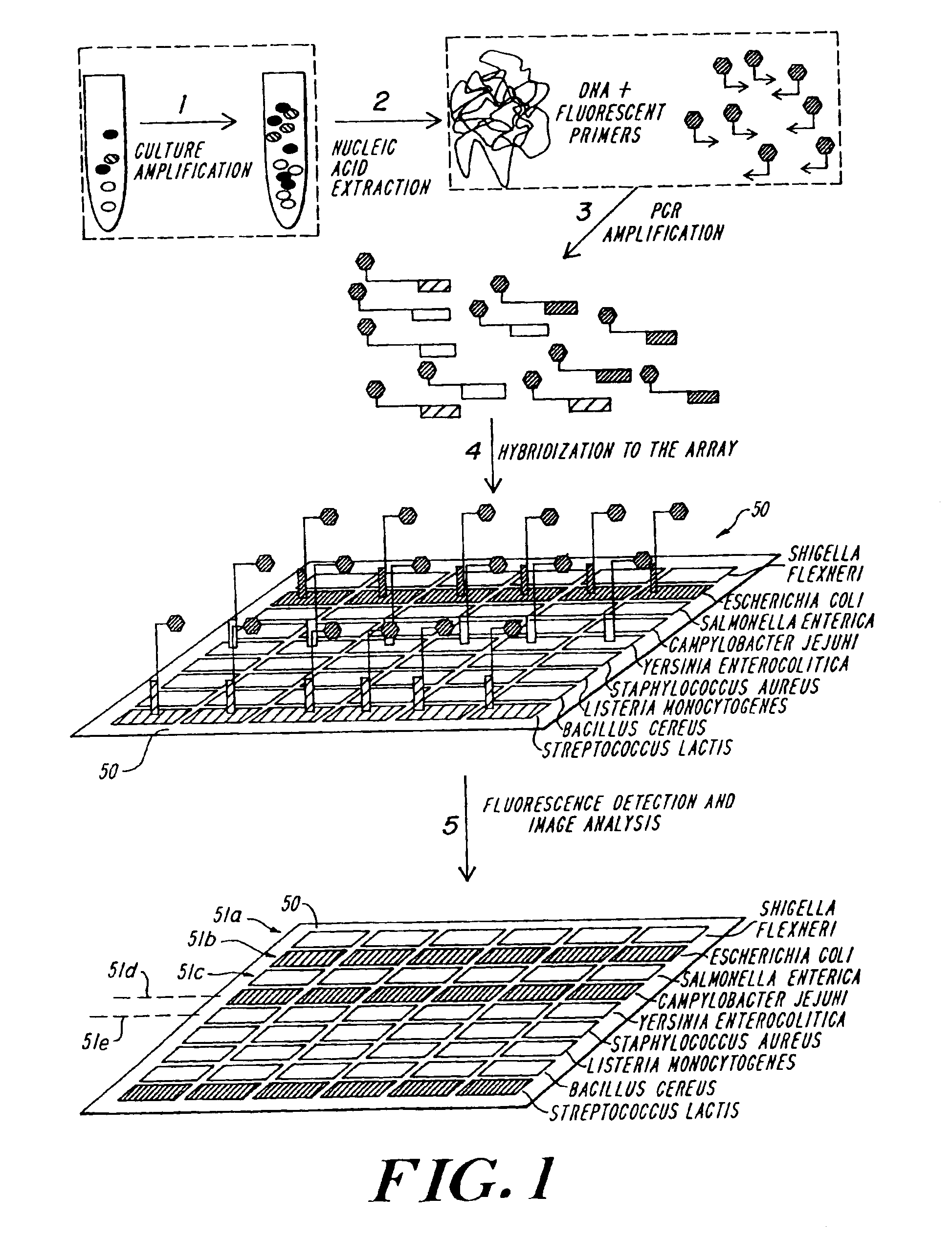Multispecies food testing and characterization organoleptic properties
a multi-species, organoleptic technology, applied in the field of bacteriaological testing and to food processing, can solve the problems of long-term research commitments, implementation of substantial changes, single outbreak of foodborne illness or even the identification of contaminated products, etc., and achieve the effect of greater sensitivity
- Summary
- Abstract
- Description
- Claims
- Application Information
AI Technical Summary
Benefits of technology
Problems solved by technology
Method used
Image
Examples
example
To examine sensitivity and specificity of a multispecies array, a model array was fabricated to detect seven different species of pathogenic microorganisms, a spoilage organism, and one indicator organism. These were the pathogens Listeria monocytogenes, Staphylococcus aureus, Escherichia coli O157:H7, Shigella dysentariae Yersinia enterocolitica, Campylobacter jejuni, and Salmonella enterica Var. typhimurium. Generic E. coli was taken as an indicator organism, and the selected spoilage organism was Bacillus subtilis. Ten diagnostic genes were chosen from each of these organisms, amplified by PCR, and the products deposited on an array on poly-L-lysine coated glass slides. Each array included duplicate addresses that contain probes for each of the target genes, and six different control addresses that contained varying amounts of DNA encoding the green fluorescent protein used for labeling, which is not known to be carried by natural populations of bacteria. Performance of the array...
PUM
| Property | Measurement | Unit |
|---|---|---|
| Sensitivity | aaaaa | aaaaa |
| Distribution | aaaaa | aaaaa |
| Organoleptic properties | aaaaa | aaaaa |
Abstract
Description
Claims
Application Information
 Login to View More
Login to View More - R&D
- Intellectual Property
- Life Sciences
- Materials
- Tech Scout
- Unparalleled Data Quality
- Higher Quality Content
- 60% Fewer Hallucinations
Browse by: Latest US Patents, China's latest patents, Technical Efficacy Thesaurus, Application Domain, Technology Topic, Popular Technical Reports.
© 2025 PatSnap. All rights reserved.Legal|Privacy policy|Modern Slavery Act Transparency Statement|Sitemap|About US| Contact US: help@patsnap.com



